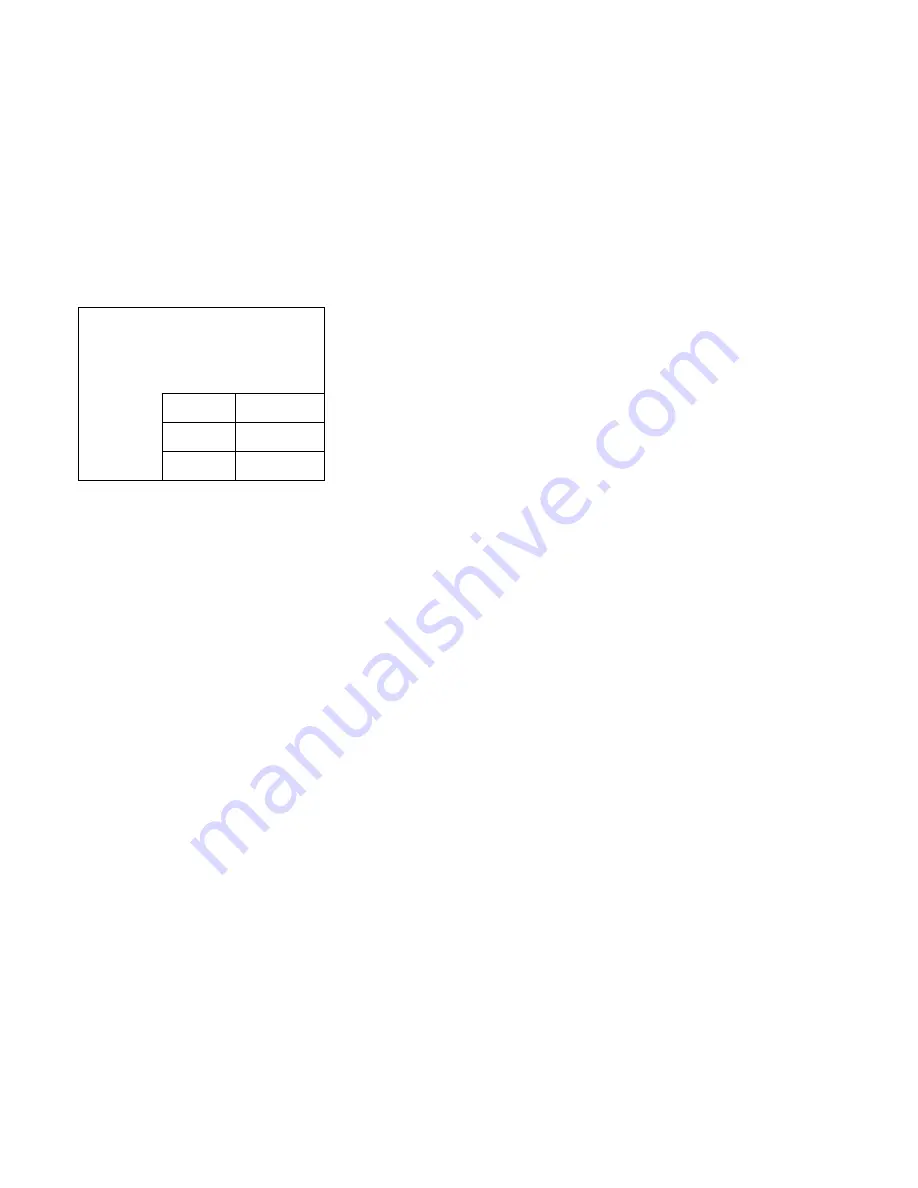
BMI Table
Standard according BMK index related to age.
Age Female
Male
17-29 year
15 %
25 %
30-39 year
17 %
27,5 %
Over 40
20 %
30 %
Connection waist – hip (waist to hip rate)
You have determined a higher fat percentage
than normal in above chart. This fat can have a
different impact on your health. With a simple
test, which you can do at home, you can
determine if you have a higher risk for cardiac
disorders. To execute this test, you have to
measure the girth of your waist just above your
belly button, without holding in your stomach
and in a relaxed position. Than measure the
girth of your hips on his widest point. Divide
the girth of the waist by the girth of the hips. If
the result is lower than 0.9 (for men) and 0.8
(for women), you don’t have a higher risk for
cardiac disorders than normal.
Measurements
Do also take your other measurements,
besides your waist and hips. If you want to
improve your silhouette, these measurements
can show you the changes your body made
during training. This method is still the most
precise, fastest and cheapest one. Please pay
attention you take your measurements always
on the same place. We advise you to take
measurements of the following parts : girth of
the neck, shoulders, breast, arms, upper arms,
waist, hips, thighs and calves.
Figure
Talents are often seen as interesting and
attractive in daily life. This is also the case for
our figure. If it doesn’t measure up to certain
criteria, we find a way to change this.
Unfortunately we also have to say that the
“Fred Astaire” type not often becomes the “
Arnold Schwarzenegger” type. This is also true
for our body, the “Rubens” type will not
become easily a “topmodel”. So before we
begin fighting windmills, it is probably more
sensible to take into account our figure. Do we
all have to be “topmodels”? Our physical
appearance depends strongly on the time we
live in. Therefore it is rarely that the body
types, you find next, exist. Most people among
us are a combination of different types.
Leptosome/ectomorphe type
Features :
•
Wider pelvis than shoulders
•
Very supple joints
•
Weak muscle development
•
Weak blood pressure
•
Increased pulse in rest
•
Weak circulation (less endurance)
•
Cold hands and feet, dizziness when you
stand up
•
Intense activity of the nervous system
•
Weak metabolism (hard to gain weight)
Contradictory to other types, this type will not
be suitable for performances which include
power and endurance. An adapted training can
improve these shortcomings even though the
starting points are not always favorable. The
figure of the ectomorphe types often creates
envy by other types. This type has the privilege
to eat as many as he wants without gaining
weight.
The atlete / mesomorphe type
Features:
•
Strong and muscular
•
Wider shoulders than hips
•
The muscular system and the blood circulation
are suitable for excellent performances
•
Weak blood pressure and pulse in rest by the
active mesomorphe types
•
Increased blood pressure and pulse by the
non-active types
•
Not susceptible to cold
•
Correct general figure
•
Normal digestion
•
In case of inactivity or over feeding, the fat
stays hanging on the body
Taking into account above features, a
moderate training will be enough for the
mesomorphe type to improve his
performances. The risk on injuries is much
higher for this type because the development
of the muscles isn’t always in proportion to the
elasticity of the muscles. We therefore
recommend you to invest a lot of time of your
training in improving the elasticity of the
muscles.
The figure of the athletic type and the active
mesomorphe type stands very close to the
ideal figure in the 80ties and 90ties. Therefore
many of us would like to belong to this
category, although they often belong to
another category. Those who can’t admit that
not everybody can have the perfect body, often
remains frustrated.
Endomorphe type
Features:
•
Round shapes, holding fat
•
Width shoulders, width pelvis (due to
overweight)
Summary of Contents for EF-2
Page 1: ......
Page 2: ......
Page 12: ...140 kg 1 2...
Page 14: ...4 2 1 A x4 53 51 7...
Page 15: ...DOWN FRONTWARD BACKWARD c UP 11 10 12 13 b a B x3 18 17 31 9 11 1...
Page 16: ...C x4 x1 28 40 65 1 20 6 53 28 29 b a...
Page 17: ...43 37 42 45 44 38 59 36 29 D x4 M5 10L 15 30 40...
Page 18: ...46R 46L 41L 69 41R 14 E...
Page 71: ......
Page 83: ......
Page 84: ......
















































